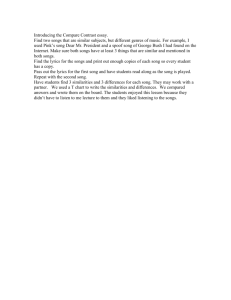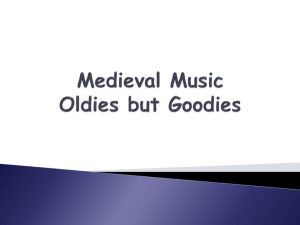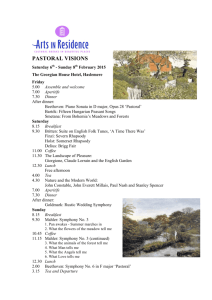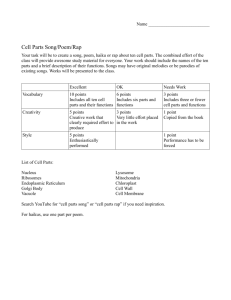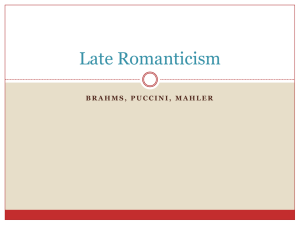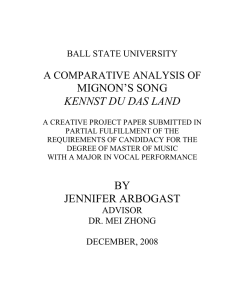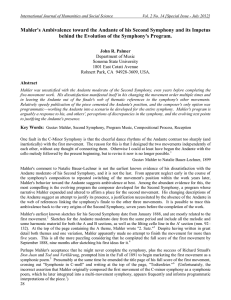Richard Strauss (1864
advertisement
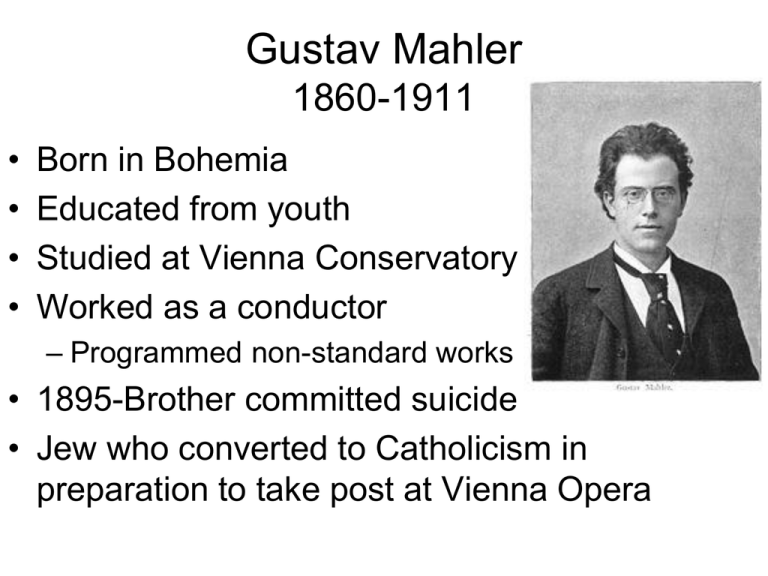
Gustav Mahler 1860-1911 • • • • Born in Bohemia Educated from youth Studied at Vienna Conservatory Worked as a conductor – Programmed non-standard works • 1895-Brother committed suicide • Jew who converted to Catholicism in preparation to take post at Vienna Opera Gustav Mahler 1860-1911 • 1902-Marriage to Alma Schindler – Two daughters, Maria, Anna • 1908- Conductor of the Met, then the New York Philharmonic – Returned to a marriage in crisis – Distortion of correspondence Music • Two major genres: Symphony and Lied • Lied – Orchestral, not piano – Symphonic Song Cycles including: • 'Songs of a Wayfarer' • 'The Song of the Earth' • 'Songs on the Death of Children' (Kindertotenlieder) Kindertotenlieder • Song Cycle for voice and orchestra • 5 chosen from a group of 425 poems by Friedrich Rückert. • 4 years after he composed this piece, his daughter, Maria died of scarlet fever • “"I placed myself in the situation that a child of mine had died. When I really lost my daughter, I could not have written these songs any more." • Added to Alma’s resentment • 3. "Wenn dein Mütterlein" "When your mother steps in through the door and I turn my head to look at her, my glance does not go first to her face, but nearer the doorstep, there, there where your dear little face used to be, as if you were bringing joy's beauty in with you as you used to, my little daughter. When your mother steps in through the door with the glowing candle, it is to me as if you came in with her as you used to, as of old hurrying behind her into the room. O you, your father's being, ah light of joy lost too soon!" Symphonies • Last great symphonic composer • Largely influenced by Beethoven – “Curse of the ninth” • Use of folk elements and Choir • Large in all scopes: – Orchestral size – Length (90m) – Dynamic extremes – Tonality Symphony No. 9 • Composed ~1910 • Time of personal crisis – Alma’s infidelity • Considered his most ‘intense’ work • Employs quotes from Kindertotenlieder – The day is fine on yonder heights; in other words the ultimate destination, beyond life • Considered “Farewell to the world” Symphony No. 2 • • • • • Nicknamed “The Resurrection” Premiered 1895 Most popular work Approx. 90 minutes Programmatic picture of the ‘march of the dead’, ‘summons call’ and then ‘resurrection’. • Text from 4th and 5th movements: • I am from God and will return to God! The loving God will give me a little light, Which will light me into that eternal blissful life! – – – – – – – – – – – – – – – – – – – – – – – – – – – Immortal life Will He who called you, give you. To bloom again were you created! O believe, my heart, O believe: Nothing to you is lost! You were not born for nothing! Have not for nothing, lived, suffered! What was created Must perish, What perished, rise again! Cease from trembling! Prepare yourself to live! O Pain, You piercer of all things, From you, I have been wrested! O Death, You masterer of all things, Now, are you conquered! With wings which I have won for myself, In love’s fierce striving, I shall soar upwards To the light which no eye has penetrated! Its wing that I won is expanded, and I fly up. Die shall I in order to live. Rise again, yes, rise again, Will you, my heart, in an instant! That for which you suffered, To God will it lead you!



